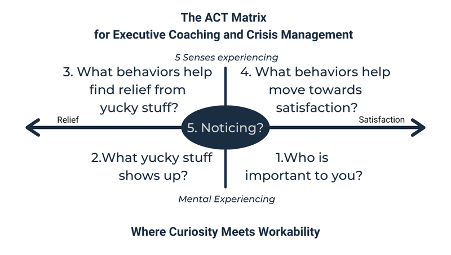How to Drop the Rope and Get More From Your Relationships with Your Employees
Gallup’s State of the Global Workplace 2022 Report shows that global engagement rates are declining but life evaluation scores are increasing. In addition, Gallup found that stress is at an all time high (44%) and worry is not far behind at 40%.
So much has changed over the last three years; remote working becoming the norm due to the Covid pandemic, followed by the shift to hybrid working, the war in Ukraine, the cost of living crisis and an increase in the use of technology are just a few examples.
The human mind operates well when things are consistent and predictable.
However, when change is required unwanted emotions such as fear, anger, frustration, worry and stress can show up.
As a leader, you may feel like your team is pulling against you. Imagine for a moment you are pulling a rope and your team members are pulling on the other side. You are stubborn and want to win so you pull harder, and as a result, they do also - so you now need to hold tighter.
Your mind tells you if you pull harder, you will win but the reality is you are stuck in this tug of war. You are getting tired both physically and mentally and while you are holding the rope you can’t devote time to the things that really matter.
Eventually, your energy drops and so does the rope, you feel you have lost and need some downtime to recover.
Now imagine another option, you decide it’s not worth it, you don’t need to win, you don’t resist, you don’t pull the rope and you opt out of responding emotionally. How does this feel? Instead of pulling the rope, you have the time to spend on those things that do really matter.
How can we drop the rope?
Developing the super skill psychological flexibility helps us to be more proactive, regulate our emotions and develop better relations. Research shows that psychological flexibility is the single most commonly proven skill of importance to your mental health and emotional wellbeing.
To develop psychological flexibility, I work from a point of view that I would like to share with you called the ACT Matrix, created by clinical psychologist Dr. Kevin Polk.
The matrix has two lines the vertical and horizontal, the vertical line has 5 senses experiencing at the top and at the bottom mental experiencing.
The horizontal line has relief on the left side and satisfaction on the right side. Each of the four quadrants has a question which we ask respectfully and from a non-judgmental perspective.
Once we have completed the Matrix an individual will be more psychologically flexible as they have been developing their noticing muscle.
Practising the use of the ACT Matrix is proven to develop psychological flexibility.
Developing the Team
Once as a leader, you have developed your own physiological flexibility you can develop psychological safety within the team. Amy Edmondson defines psychological safety as “a climate in which people are comfortable expressing and being themselves.”
To set the context for psychological safety I use the ProSocial Matrix which looks almost the same as in the ACT Matrix, apart from one question. Rather than asking who’s important in the lower right, I ask what the shared purpose is, immediately shifting the context away from the individual to the group. The shared purpose is the services that the organisation provides for its users.
As isolation and feelings of being overwhelmed continue to have an impact on the mental wellbeing of workforces, leaders need to know how to create environments where people feel that they can speak freely about how they feel. In other words, psychological safety needs to be a priority for everyone looking to develop the wellbeing of their team.
During this 1 hour masterclass I will help you understand:
How to drop the rope by developing the super skill of psychological flexibility
How to have meaningful conversations with your team about how they are feeling.
Do you need further help?
If so, I offer a complimentary call to discuss your requirements and how we might work together.
Watch the webinar
How to drop the rope and get more out of your relationships with your employees


